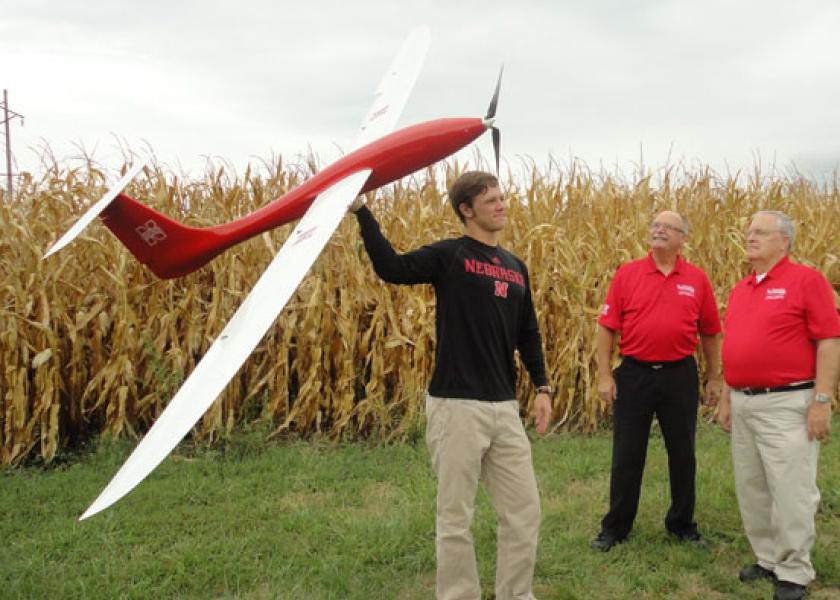Responding to Uninvited Drones Over Livestock

Source: University of Nebraska-Lincoln
Q: Can a rancher, feedlot or dairy legally shoot down a drone flying over its operation? Shared by Dee Griffin DVM, University of Nebraska–Lincoln, Great Plains Veterinary Education Center
A: No, says Wayne Woldt, associate professor in the UNL Department of Biological Systems Engineering, who is researching the use of unmanned aerial systems (UASs) and has a federal Certificate of Authorization to use them in his research. It's illegal to shoot down any aircraft and unmanned aerial vehicles (UAVs) are aircraft regulated by the Federal Aviation Agency (FAA).
UAVs or Unmanned aerial systems (UAS), often called drones, can fly over an area if they are within line of sight of the operator and being operated for non-commercial, hobby purposes. If a producer has a problem with a drone flying over an operation and disturbing the livestock, he or she should call the appropriate authorities (police, sheriff's department, or FAA) and video record and document the UAV flight, Woldt said. In addition, if the producer can identify the drone operator to the authorities, it would be very helpful. This will generally involve locating the pilot of the drone, recording any additional information such as vehicle license plates, without confronting the operator.
The FAA administers the air space from the ground surface (soil, grass, top of building) upward. If it finds there is a problem, it can rule that the UAV was in violation due to careless and reckless operation and issue a fine or other penalty. Well-equipped UAV systems with cameras and sensors can cost from $7,500 to $40,000 or more, creating a substantial loss if destroyed.
Woldt says concerns often are based on a need for safety and potential infringements of property and privacy. The former is addressed by federal aviation regulations, while property and privacy concerns are addressed by civil and perhaps even criminal law. Someone can fly a UAV equipped with a camera over a neighbor's backyard and be adhering to aviation law, but infringing on someone's personal privacy. It gets back to one's expectation of privacy in different settings, Woldt said. If a person feels that their privacy has been infringed upon, then the same recommendation applies — contact appropriate authorities with as much information about the UAV as can be obtained, without confrontation.
Landowners can take steps to create a no-fly zone over their property by documenting their preferences at https://www.noflyzone.org/. The No Fly Zone organization works with manufacturers and UAV software developers. While it cannot guarantee that individual no-fly zones will be respected, it will provide the information to leading manufacturers, who can incorporate these areas into their software.
Proposed Changes to UAV Regulations
Earlier this month the FAA released a set of proposed regulations to more fully integrate UAS into the National Air Space. When approved, these regulations would open the door to much wider UAS use, including for a breadth of possible agricultural applications. For more information on the proposed FAA regulations, and to provide comments to the FAA on the regulations, see:
- DOT and FAA Propose New Rules for Small Unmanned Aircraft Systems — FAA News Release (2/15)
- FAA Overview of Proposed UAS Regulations
- Operation and Certification of Small Unmanned Aircraft Systems — Proposed Rules and Comment Period until April 24, 2015
- Know Before You Fly – Federal and industry educational campaign for UAS operators







